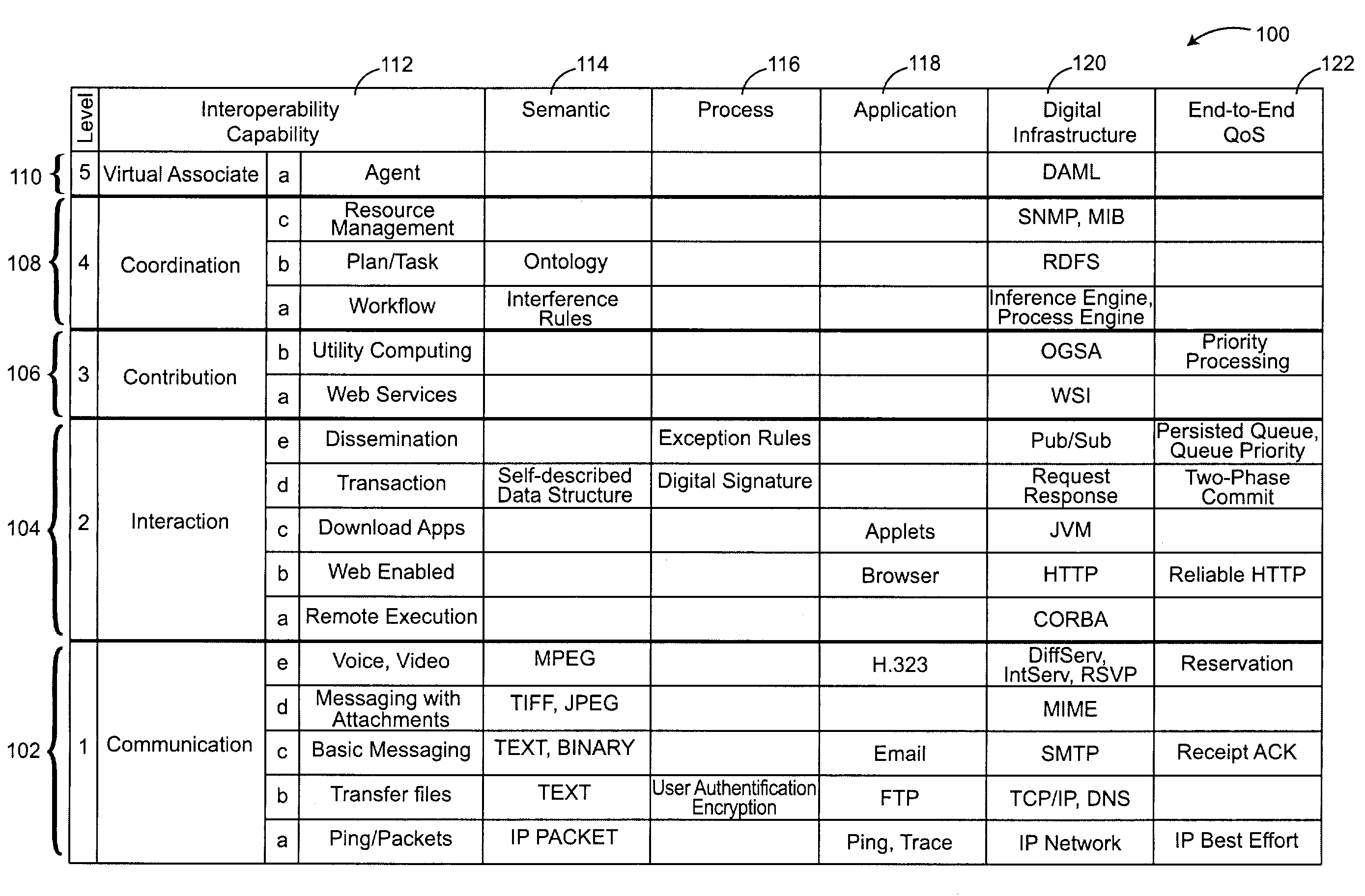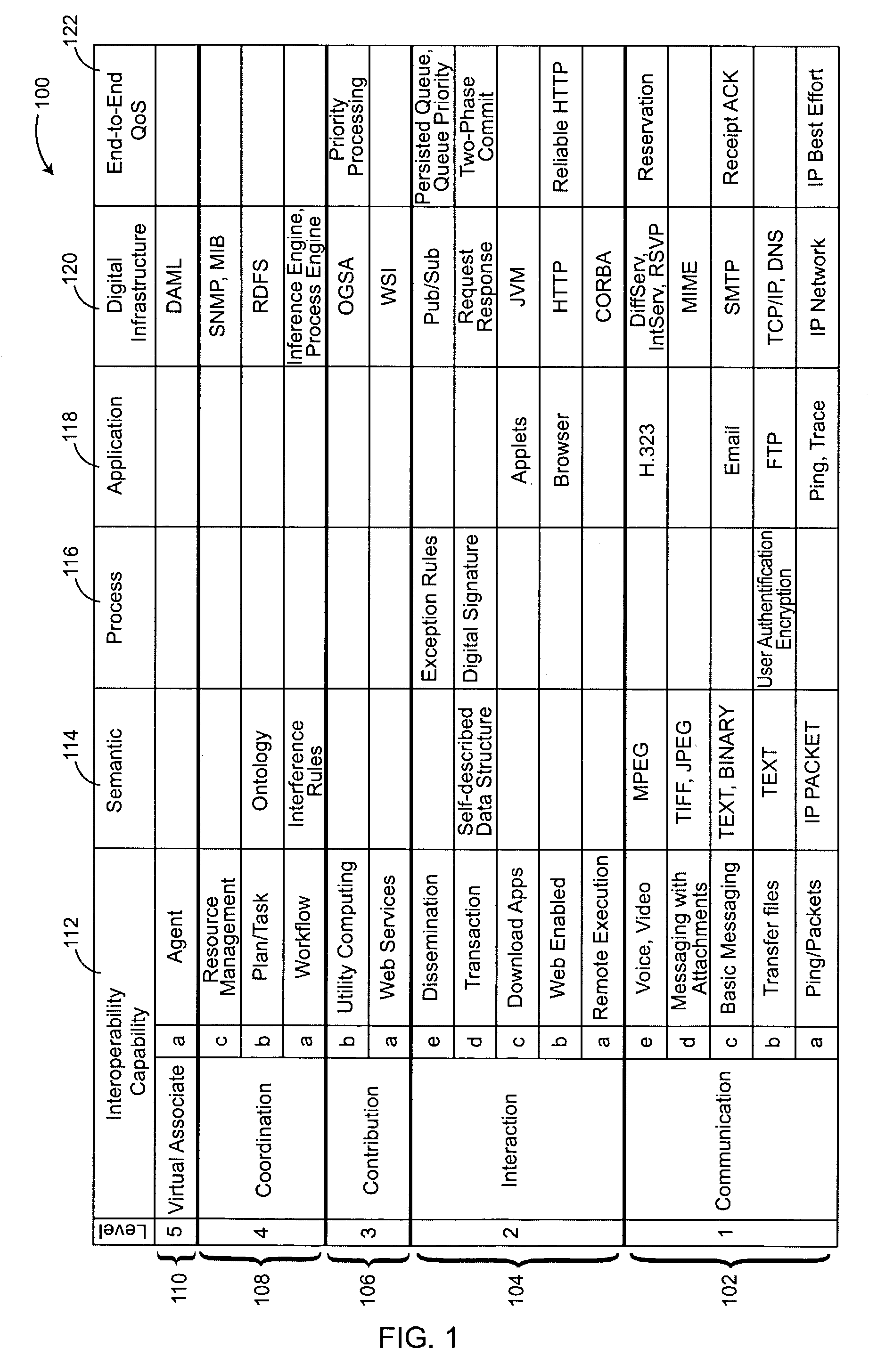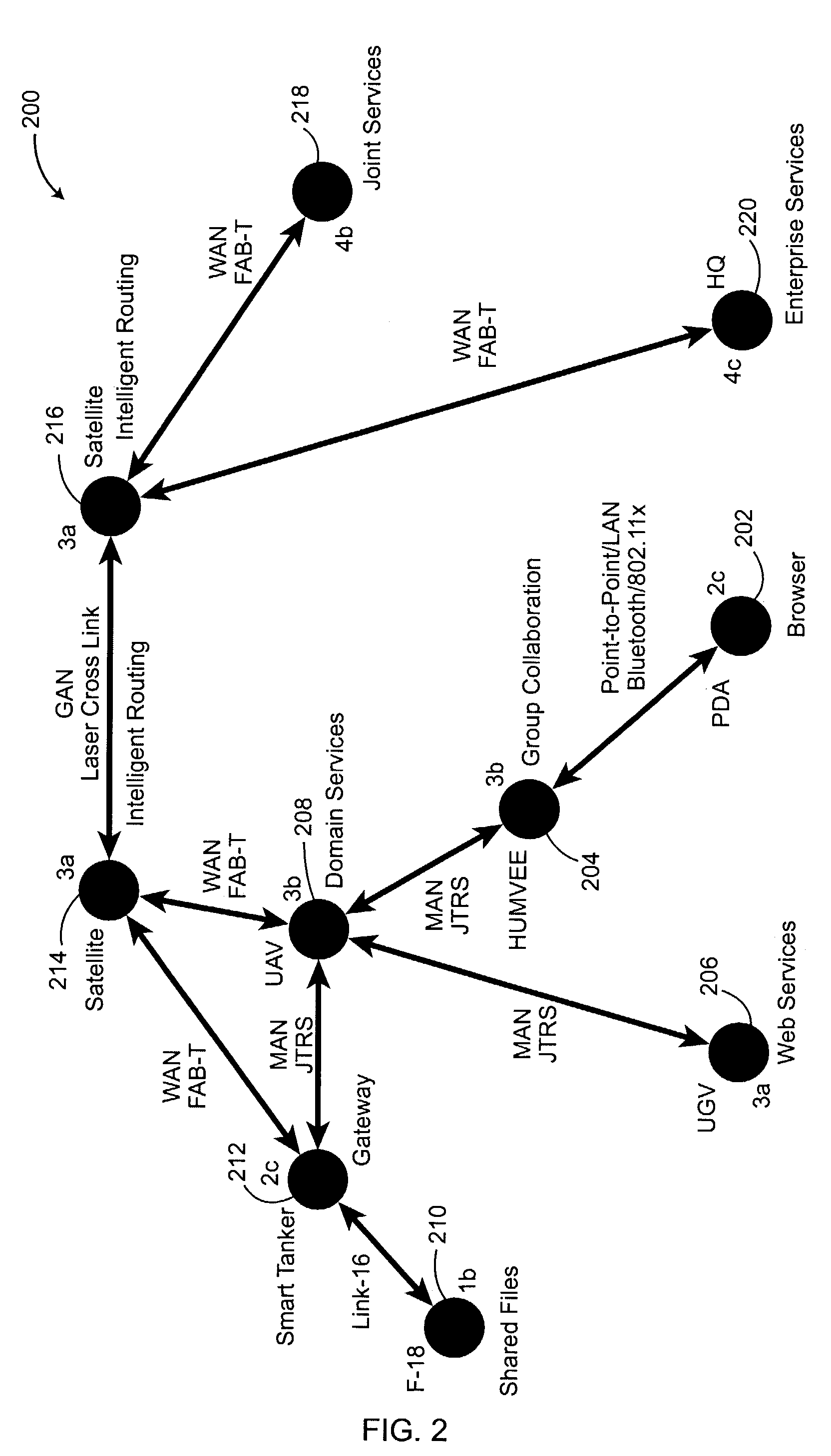Systems and methods for providing collaboration between systems
- Summary
- Abstract
- Description
- Claims
- Application Information
AI Technical Summary
Benefits of technology
Problems solved by technology
Method used
Image
Examples
Embodiment Construction
[0016]The following detailed description is exemplary in nature and is not intended to limit the invention or the application and uses of the invention. Furthermore, there is no intention to be bound by any theory presented in the preceding background of the invention or the following detailed description.
[0017]According to various exemplary embodiments, a reference framework is provided that defines various discrete levels of interoperability for nodes used in a network centric operation. Each level is defined with particular standards for level of security, quality of service, available functionality and the like. To create a system for sharing information in a network centric operation (NCO), various scenarios are determined, and assets needed for each scenario are identified and functionality / capability assigned to each asset. After obtaining measures of effectiveness (MOE) and key performance parameters (KPPs), each asset can be assigned a level of interoperability from the ref...
PUM
 Login to View More
Login to View More Abstract
Description
Claims
Application Information
 Login to View More
Login to View More - R&D Engineer
- R&D Manager
- IP Professional
- Industry Leading Data Capabilities
- Powerful AI technology
- Patent DNA Extraction
Browse by: Latest US Patents, China's latest patents, Technical Efficacy Thesaurus, Application Domain, Technology Topic, Popular Technical Reports.
© 2024 PatSnap. All rights reserved.Legal|Privacy policy|Modern Slavery Act Transparency Statement|Sitemap|About US| Contact US: help@patsnap.com










